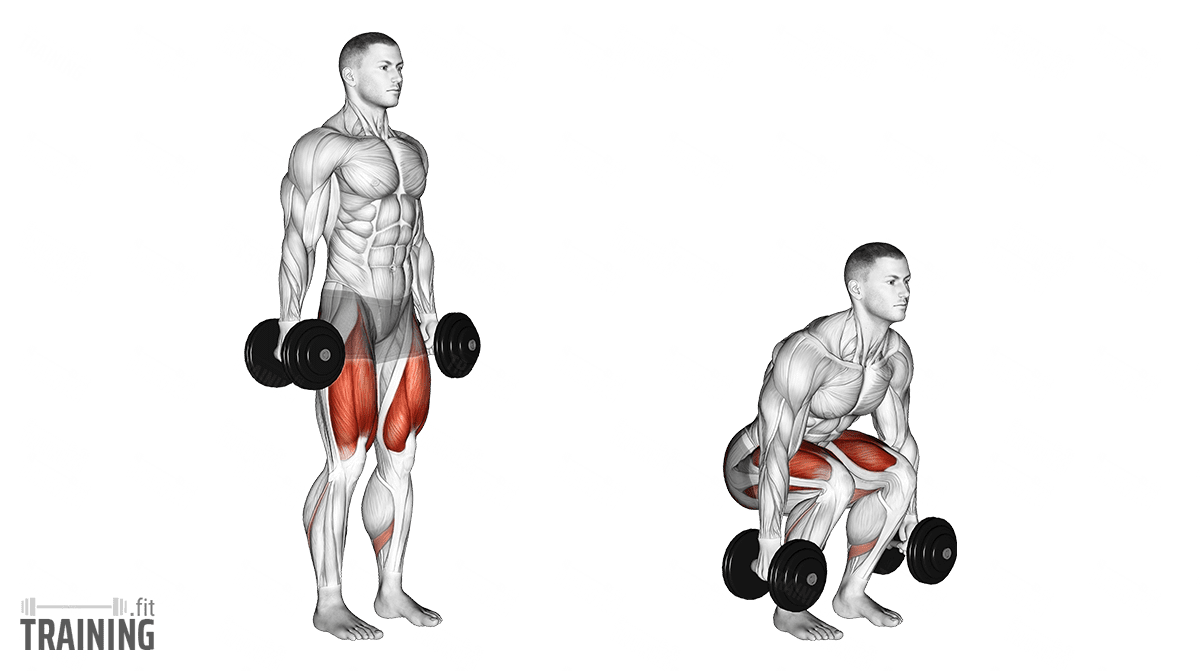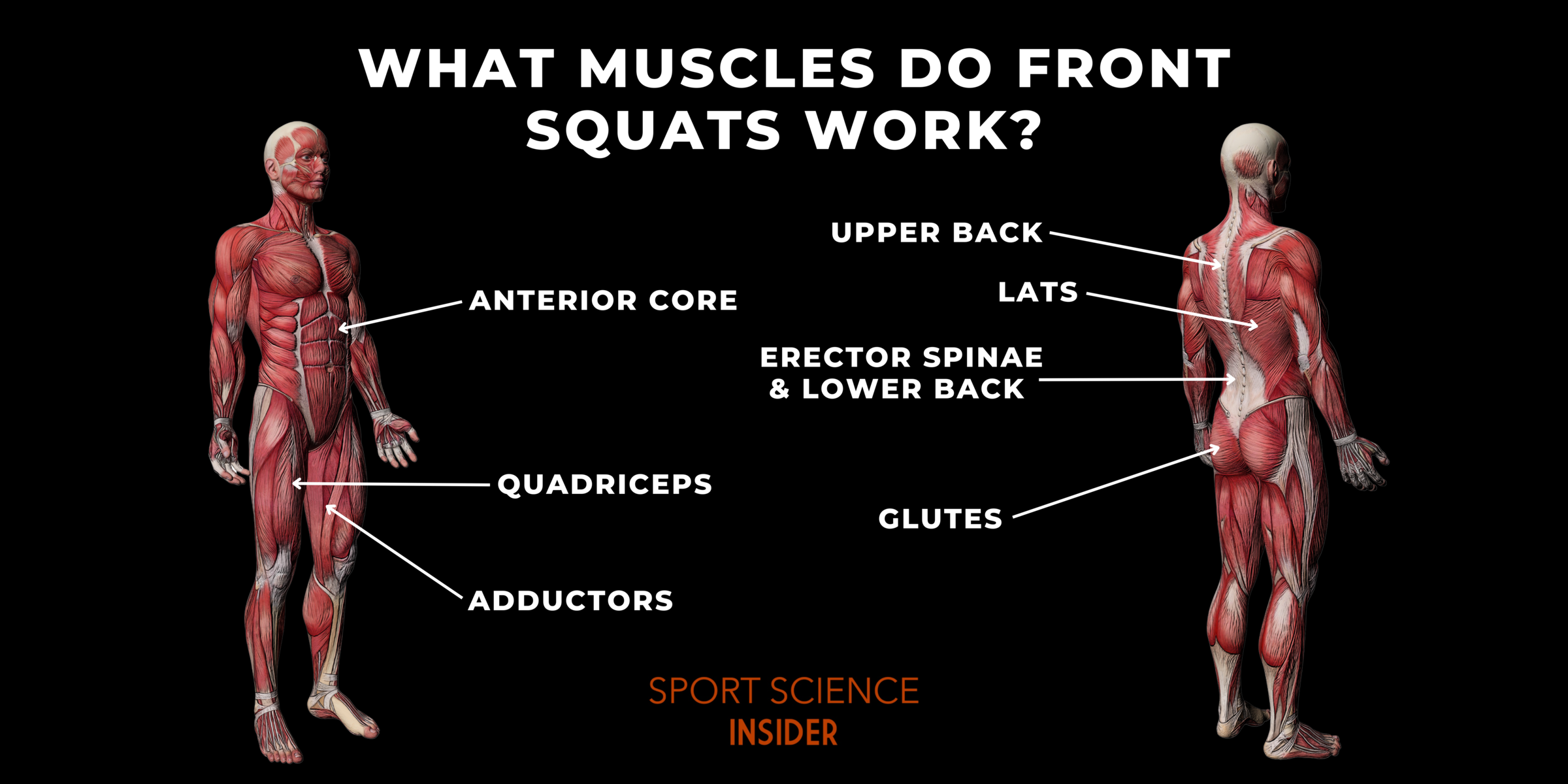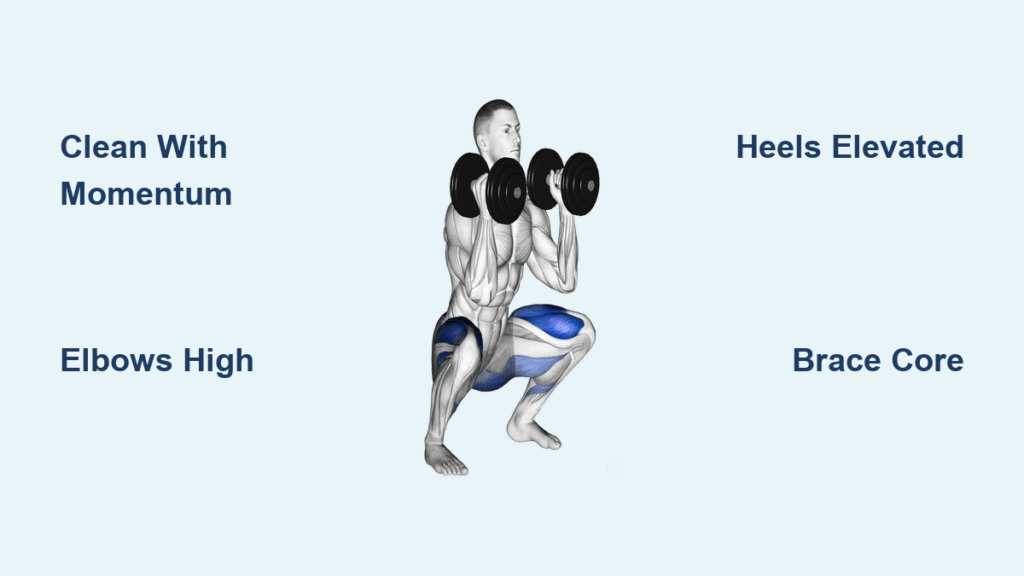Your legs scream as you fight to stay upright, dumbbells threatening to slide off your shoulders while your quads burn like never before. This is the reality of the dumbbell front squat for most lifters. Unlike barbell variations, this deceptively challenging movement exposes weaknesses in setup, balance, and core stability within seconds. You’re not alone—nearly 70% of home gym users struggle with proper front rack positioning, turning what should be a quad-building powerhouse into a frustrating ordeal.
The good news? Mastering the dumbbell front squat unlocks unparalleled quad development with less spinal stress than traditional squats. This guide cuts through the confusion with battle-tested techniques from elite strength coaches. You’ll discover how to clean heavy dumbbells safely, eliminate elbow drop that ruins your form, and program this exercise for explosive growth—even without a squat rack. By the end, you’ll transform this “weakness exposure tool” into your most effective lower-body builder.
Perfect Dumbbell Front Squat Setup Sequence

Clean Dumbbells to Front Rack Position Without Arm Strain
Start with dumbbells at your sides—never attempt to curl them to shoulder height. The hang power clean method creates effortless momentum:
- Dip into a quarter squat (knees bent 20-30 degrees) with dumbbells resting against your thighs
- Explosively extend hips, knees, and ankles while shrugging shoulders upward
- Pull elbows high and fast as you drop under the weights
- Catch dumbbells on your anterior deltoids with elbows pointing forward
Critical visual cue: Imagine “jumping the weights up” rather than lifting them. Your biceps shouldn’t feel fatigued—if they do, you’re muscling instead of using momentum. Practice with 15-20lb dumbbells first until the catch feels effortless.
Thigh Kick-Up Method for Heavy Dumbbells
When weights exceed 40lbs, the seated bench method becomes impractical. Try this gym-tested alternative:
- Rest dumbbells horizontally on your thighs just above the knees
- Drive hips forward aggressively while simultaneously kicking heels backward
- Guide weights upward with hands as shoulders absorb the load
- Immediately set elbows high and brace core
Pro tip: Wear grippy gym shoes to prevent slipping during the kick-up motion. This technique lets lifters handle 50lb+ dumbbells safely—just ensure your shoulders are warm first to avoid impingement.
Stance and Bracing Protocol for Maximum Stability
Your foot position determines everything. Stand shoulder-width apart with toes turned out 15-30 degrees—this creates the hip space needed for deep upright squats. Now brace like your life depends on it:
- Take a 360-degree breath into your abdomen (not chest)
- Contract abs as if preparing for a punch
- Maintain this pressure throughout the movement
Common mistake: Lifters exhale too early during descent, causing spinal collapse. Instead, breathe out only during the final third of the ascent. Test your bracing by pressing hands against your sides—you should feel solid muscle engagement all around your core.
Execute Flawless Squat Mechanics for Quad Dominance
Descend With Knee-Dominant Control
Initiate the movement by bending knees before hips—a critical distinction from back squats. This keeps your torso vertical and shifts load to quads. As you lower:
- Push knees forward over toes (within comfortable range)
- Keep elbows high to prevent dumbbells drifting
- Descend until hamstrings touch calves or lumbar spine threatens to round
Visual cue: Imagine sitting down between your legs rather than pushing hips back. Your shins should stay nearly vertical at the bottom position—this is your quad activation sweet spot.
Drive Up With Explosive Hip Extension
From the bottom position:
- Push through entire foot (heels, balls, toes)
- Drive elbows toward ceiling while maintaining rack position
- Squeeze glutes hard at lockout
Mental trigger: “Crush the floor with your feet” creates instant power. Notice how the dumbbells naturally stabilize when you drive upward correctly—no arm tension needed. This explosive drive builds athletic power while protecting your spine.
Fix These 3 Form Mistakes Sabotaging Your Gains

Elbows Drifting Downward
Why it happens: Upper back fatigue causes elbows to drop, pulling dumbbells forward and forcing you to lean back.
Immediate fix: Reset between reps by pausing upright and consciously lifting elbows. Perform 30-second front rack holds daily to build endurance.
Prevention: Add face pulls (3×15) and scapular push-ups to your routine—weak rear delts destroy front squat form.
Forward Trunk Lean Causing Heel Lift
Why it happens: Restricted ankle dorsiflexion prevents proper knee travel.
Immediate fix: Place 5-10lb plates under heels during squats—this instantly improves depth.
Permanent fix: Daily wall ankle mobilizations (3×30 seconds per foot): Stand 4 inches from wall, drive knee to wall without heel lift. Can’t touch? You’ve found your mobility bottleneck.
Insufficient Depth Limiting Hypertrophy
Why it happens: Most lifters stop when quads burn, missing the glute/adductor growth zone.
Immediate fix: Heels-elevated variation (2.5-5lb plates) allows deeper knee travel.
Science-backed tip: Full-depth squats produce 2.1x more glute and adductor growth than partial reps (Kubo study). If you’re not hitting depth, you’re leaving muscle gains on the table.
Muscle Activation Breakdown: Why This Beats Back Squats

The dumbbell front squat uniquely targets quads through deep knee flexion while reducing spinal compression by 20-30% compared to back squats. Your vastus medialis (teardrop muscle) fires intensely during the full descent phase—this is where the “squat burn” becomes visible muscle separation.
Crucially, the front-loaded position forces your spinal erectors and upper back to work isometrically. This builds functional core strength that protects your spine during athletic movements—something back squats can’t replicate. When performed correctly, you’ll feel your quads screaming while your lower back stays cool and stable.
Load and Rep Guidelines for Your Goals
Hypertrophy Focus (8-12 Reps)
- Use dumbbells you can control for 10 perfect reps
- Rest 75 seconds between sets to maximize metabolic stress
- Stop 2 reps short of failure to maintain clean form
Strength Development (4-8 Reps)
- Select heaviest dumbbells you can clean safely
- Rest 2.5 minutes between sets for full recovery
- Never sacrifice setup quality for heavier weight
Progression rule: When you hit 12 clean reps, increase weight by the smallest dumbbell increment (usually 2.5-5lbs). This prevents the form breakdown that plagues most lifters attempting big jumps.
Smart Variations for Your Limitations
Heels-Elevated Dumbbell Front Squat
Place heels on 2.5-5lb plates to instantly improve ankle mobility. This variation increases quad demand by 15-20% while accommodating tight calves. Ideal for lifters who can’t touch their toes.
Goblet Squat Alternative
Hold one dumbbell vertically against your chest with both hands. Though limited by arm strength, this teaches the critical upright torso position before progressing to dual-dumbbell work. Perfect for beginners.
Zercher Position Hack
Cradle dumbbells in your elbow crooks against your torso. Easier on wrists than front rack position while maintaining anterior loading. Creates brutal core engagement through the entire movement.
Troubleshooting Quick Reference
Problem: Dumbbells slipping off shoulders
Solution: Use hex dumbbells with flat ends (not round), apply chalk, or try cross-arm rack position (hands crossed over dumbbells)
Problem: Lower back pain during setup
Solution: Reduce weight immediately—never clean weights that compromise spinal neutrality. Practice hang power cleans without squatting first
Problem: Rep failure due to grip fatigue
Solution: Strengthen upper back with 3×15 band pull-aparts daily. Avoid straps—they mask the core stability issue causing grip failure
Equipment and Safety Non-Negotiables
- Floor surface: Train on non-slip surfaces (rubber mats often cause instability)
- Rep safety: Never train to failure on the clean portion—technical breakdown here risks shoulder injury
- Weight ceiling: If you can’t clean dumbbells safely, switch to goblet squats or barbell variations
- Spotting: Unlike barbell squats, this move can’t be effectively spotted—always leave 1-2 reps in reserve
Pro tip: If your first rep of a set feels shaky, the weight is too heavy. Period. Sacrificing form for ego weight guarantees injury with this exercise.
Key Takeaways for Real Results
The dumbbell front squat delivers unmatched quad development with minimal equipment—when executed correctly. Start by perfecting your clean technique before adding weight, as rushed setup destroys everything that follows. For immediate gains:
- Fix ankle mobility with daily wall drills (4 inches from wall, 3×30 seconds)
- Always use the heels-elevated variation if depth is limited
- Prioritize 8-12 controlled reps over heavy grinding sets
Remember: Five perfect reps build more muscle than fifteen sloppy ones. This exercise rewards precision over poundage—master the mechanics, then progressively overload. Your quads (and spine) will thank you when you see those new muscle lines pop during your next leg day. The dumbbell front squat isn’t just an alternative to barbell work; it’s a superior tool for building athletic, injury-resistant lower bodies. Now go own that front rack position.




